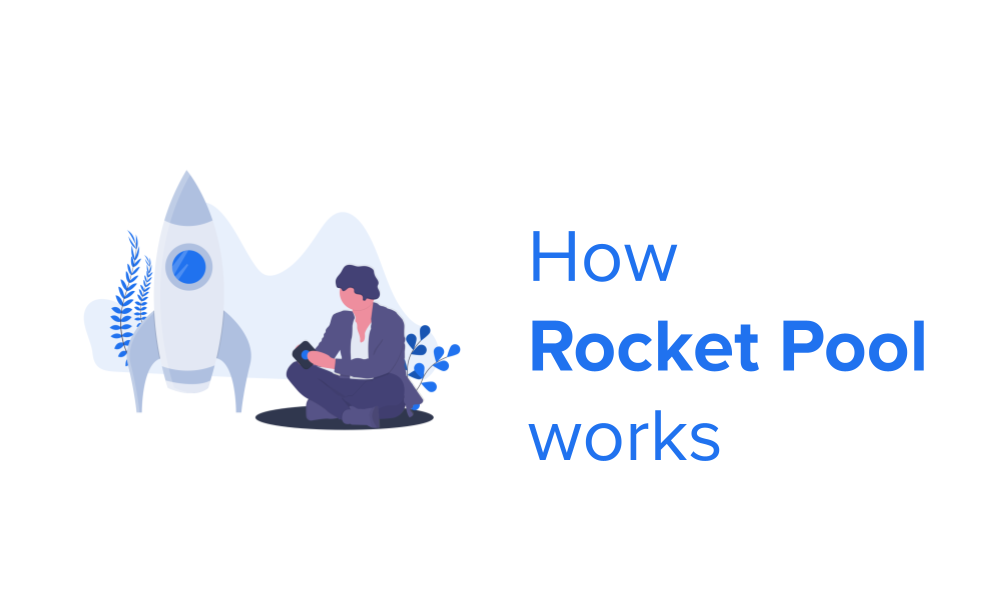With the introduction of Ethereum 2.0 there have been a few phased updates on the Ethereum blockchain. In phase 0, Ethereum moved from Proof of Work to Proof of Stake with the launch of the Beacon Chain. This has caused problems to the stakers involved with staking on Ethereum 2.0. However, Rocket Pool has been able to solve and pave the way for the future of staking.
But, what is Rocket Pool?
Rocket Pool is an ETH2 proof of stake protocol which is designed to be decentralized, trustless and compatible with Ethereum 2.0. The main idea behind the protocol is to cater to people who want to stake and people who want to stake and run their own nodes. The platform allows for liquidity, quick withdrawals, really low staking requirements and provides the infrastructure for it all. The protocol has its own monetary and governance token called RPL token.
Rocket Pool uses smart contracts to maintain a trustless and permissionless structure. Thanks to the network DAO there is a decentralized governance run by its own users. To connect to the main Eth 1 chain to beacon chain, the network uses a unique decentralized oracle DAO network. This allows people with not enough financial capacity to own 32 ETH, technical expertise and staking infrastructure to benefit from the staking and earn higher ROIs.
Staking on Ethereum network
Now, Ethereum has moved to the proof-of-stake concept by using the beacon chain. This has allowed Ethereum to move from its mainnet chain to a second one (ETH2). However, this also implies that staked coins can not be withdrawn until Ethereum’s forthcoming chain merge has been completed. The merge is set to be implemented in 2022 in phase 1.5. Until then, many investors have turned to providers offering liquid staking services. Liquid staking allows tokens representing the value of staked assets to be utilized in decentralized finance without requiring the underpinning assets to be unstaked. This works exactly like when you put gold in the bank and use the cash you get to make purchases instead.
Now, ETH2 staking requires validators on the Beacon chain. A validator requires at least 32ETH to deposit before they can start validating. Validators are responsible for confirming legality and validation of transactions by doing some number crunching.
Unlike ETH1 where validators are not guaranteed block rewards unless they find a next block, Validators on ETH2 network work on a proposed schedule. However, the rewards that validators earn remain on the ETH2 network. Therefore, there is no way to get them back to the ETH1 network and use them as they see fit. The rewards will keep on piling up until the ETH1 and ETH2 network merge together and withdrawals have been implemented.
How Rocket Pool Works
Unlike solo stakers who are required to stake 32ETH, Rocket Pool nodes only require 16ETH per validator. This is then coupled with the 16 ETH from the staking pool. This is called a mini pool. Together, they look like a normal validator to the Beacon chain. The withdrawals, rewards and delegation is handled by Rocket Pool’s smart contracts on ETH1 chain, thus making it completely decentralized.
The rToken
When you staking your ETH token you are given an rETH in exchange. The value of which is determined by:
ETH: rETH = (amount of ETH staked on ETH1 / total validator balance on ETH2)
For example, if you deposit 10 ETH on Rocket Pool and receive 10 rETH in exchange. In a few years when the balance on the Beacon chain increases due to validator rewards and your exchange value will change accordingly. Say 50 ETH had been staked with Rocket Pool and the sum of all validator balances on ETH2 was 75 ETH. Then, 1 rETH would be worth (75/50) = 1.25 ETH. Therefore allowing you to trade you 10 rETH back to Rocket Pool’s smart contracts and receive 12.5 ETH in return.
Rocket Pool has bridged a crucial gap for ETH2 stakers both in terms of minimum requirement and quicker rewards. Now, you can start staking your own token without worrying about the infrastructure, rewards withdrawal and commissions.

